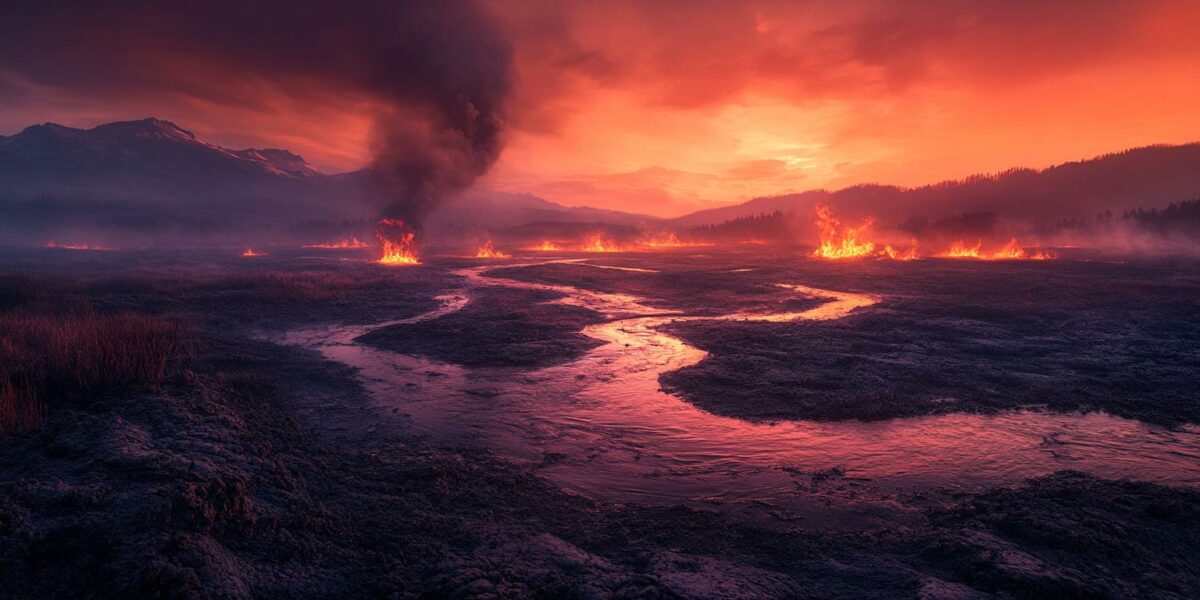The Great Dying: Unraveling the Cause
Life on Earth has never faced an upheaval quite like the end-Permian mass extinction. Known as The Great Dying, this cataclysm wiped out an estimated 90 percent of all species. The primary culprit behind this global disaster was an unprecedented surge of carbon dioxide from the Siberian Traps.
While this massive volcanic activity set the stage, scientists had long puzzled over what triggered the extreme climatic shifts. The resilience of typically hardy species and the lack of migration to cooler areas added to the mystery. A recent study offers new insights into these enigmas.
Researchers from the University of Bristol and China University of Geosciences (Wuhan) propose that intense global warming led to decade-long “mega El Niños.” These prolonged events caused wild climatic fluctuations, unlike today’s predictable patterns. Their findings were published in the journal Science.
According to Alexander Farnsworth of the University of Bristol, “Our research has revealed that increased greenhouse gases don’t just warm the planet; they amplify weather and climate variability, making survival exceedingly difficult.”
Surviving the Mega El Niños
In contrast to today’s El Niños, which last a year or two, ancient mega El Niños could persist for a decade. These prolonged events brought drastic shifts in rainfall and temperature, making adaptation nearly impossible for many species. The year 2023-2024 saw similar, albeit shorter, climate disruptions.
Evidence comes from oxygen isotopes in fossilized conodont teeth, revealing a collapse in mid and lower latitude temperature gradients. The intense climatic variability signaled a significant departure from today’s patterns.
Farnsworth noted, “It got too hot everywhere. The changes identified were profound, with more intense and prolonged El Niño events than we see today. Species couldn’t adapt or evolve quickly enough.”
Key findings of the study include:
- A collapse in temperature gradients across latitudes
- Prolonged droughts and floods making adaptation impossible
- Massive wildfires triggered by extended dry periods
Evidence of a World in Crisis
Charcoal found in rock layers from this period confirms that the Earth was ravaged by immense wildfires. Researchers describe the planet as being in a “crisis state,” with continents ablaze and oceans stagnating. Terrestrial life suffered the most, with few land animals able to adapt to the wild climate.
Yadong Sun from China University of Geosciences, Wuhan, stated, “Only species that could migrate rapidly stood a chance, but few plants or animals had that capability. Fortunately, some survived, preventing total annihilation.”
The study underscores the severity of the climatic changes, highlighting how intense and prolonged El Niño events were a significant factor in the mass extinction. These findings offer a stark reminder of the potential impacts of current climate trends.
While the end-Permian event was driven by natural volcanic activity, the parallels with today’s human-induced climate change are striking. The research underscores the importance of understanding and mitigating climate variability to ensure the survival of diverse life forms.
Lessons from the Past
The insights gained from this study are crucial for understanding our current climate trajectory. It emphasizes how prolonged and severe climatic events can lead to widespread extinction. The end-Permian extinction serves as a cautionary tale for the modern world.
Recognizing the potential for climate-induced variability to cause profound ecological disruptions is essential. The ancient mega El Niños illustrate the devastating effects of prolonged weather extremes, which are becoming increasingly relevant today.
As we face escalating climate challenges, studying past events helps us anticipate potential future scenarios. The lessons from the end-Permian period highlight the need for proactive climate strategies to safeguard biodiversity and ecosystem stability.
Ultimately, understanding the mechanisms behind such catastrophic events can inform our efforts to mitigate similar risks in the present and future. The study serves as a powerful reminder of the importance of addressing climate change comprehensively.



gabriellacascade
Interesting read. How do modern El Niños compare in terms of impact?
Mackenzie
If only the dinosaurs had climate scientists back then! 😂
Joseph
Wow, the parallels with today’s climate change is scary! 😮
paisleymonolith
Can someone explain what conodont teeth are? Never heard of them before!
asherspark
Great article but I wonder, could there have been other factors involved in The Great Dying?
Liam
Thanks for sharing this! It really puts our current climate issues into perspective.
Benjamin
Is it possible that we could experience such prolonged El Niños in the near future?
muffinvoyager
So basically, nature has been trying to kill us for millions of years. Got it.
Genesis
Fascinating research! 🌍 Is there a link to the full study?
Hannah
Wow, this is mind-blowing! How did they find out about these mega El Niños?